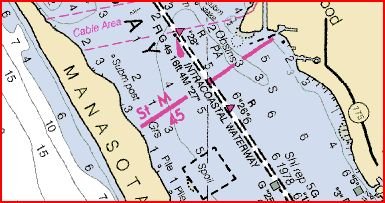A basic question for you guys:
I read many articles about various locations on the ICW that say something (a marina, etc) is located near mile marker 200 or 300, etc. I realize mile marker zero is in Norfolk, but when on the ICW I just see markers (even and odd) that start over at state lines.
Where do I find the "big picture mileage" along the Atlantic ICW?
I read many articles about various locations on the ICW that say something (a marina, etc) is located near mile marker 200 or 300, etc. I realize mile marker zero is in Norfolk, but when on the ICW I just see markers (even and odd) that start over at state lines.
Where do I find the "big picture mileage" along the Atlantic ICW?


